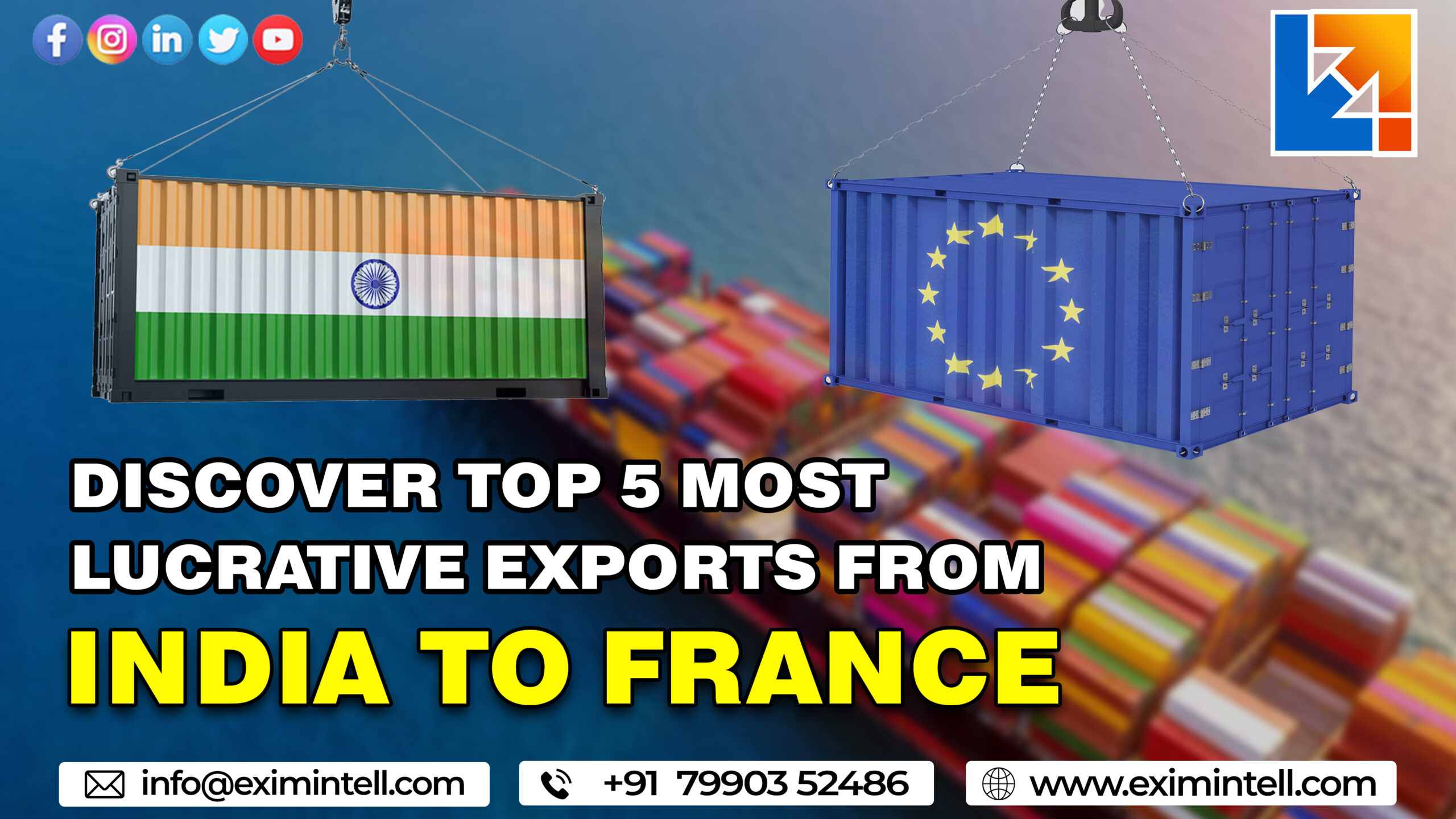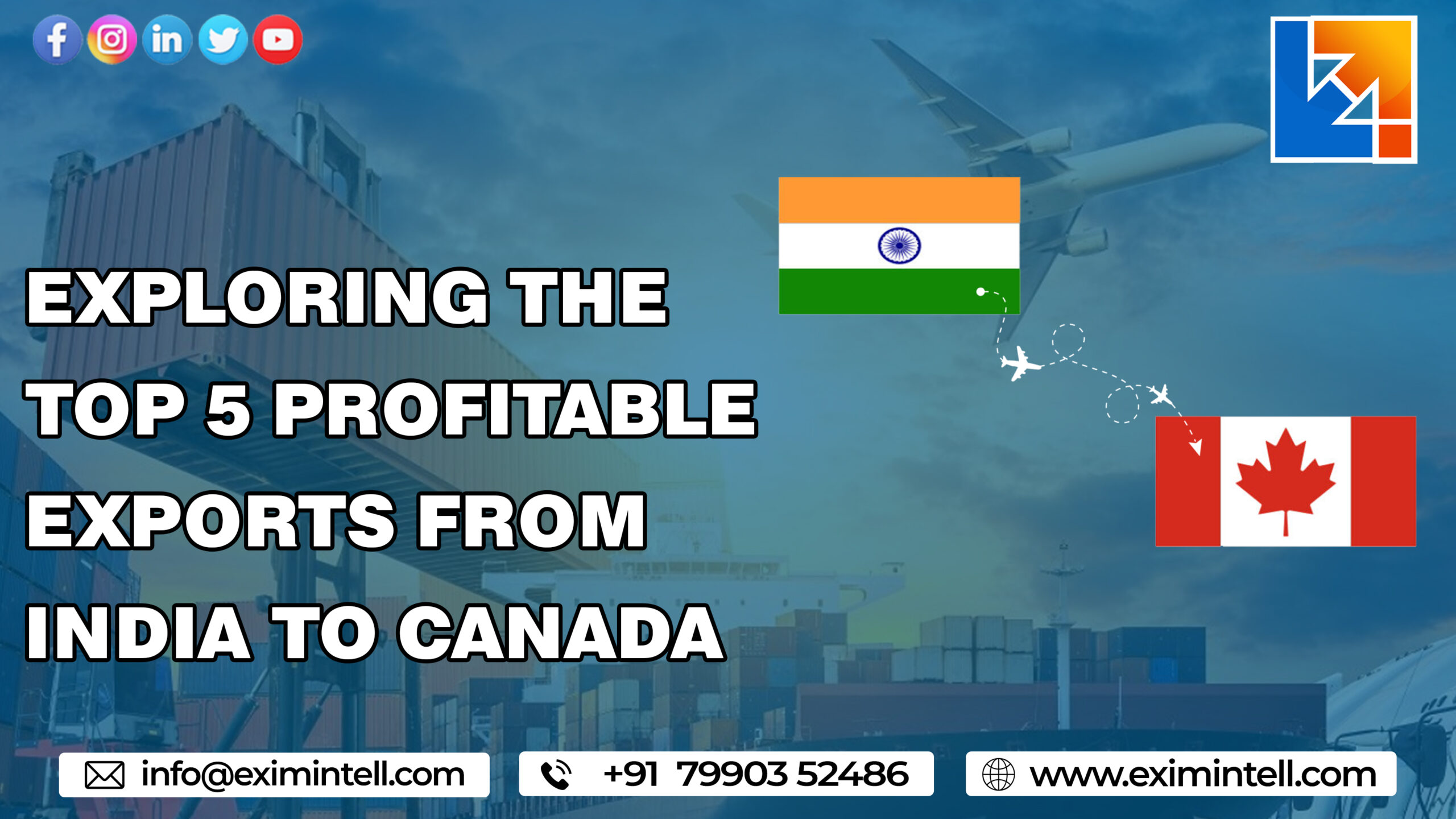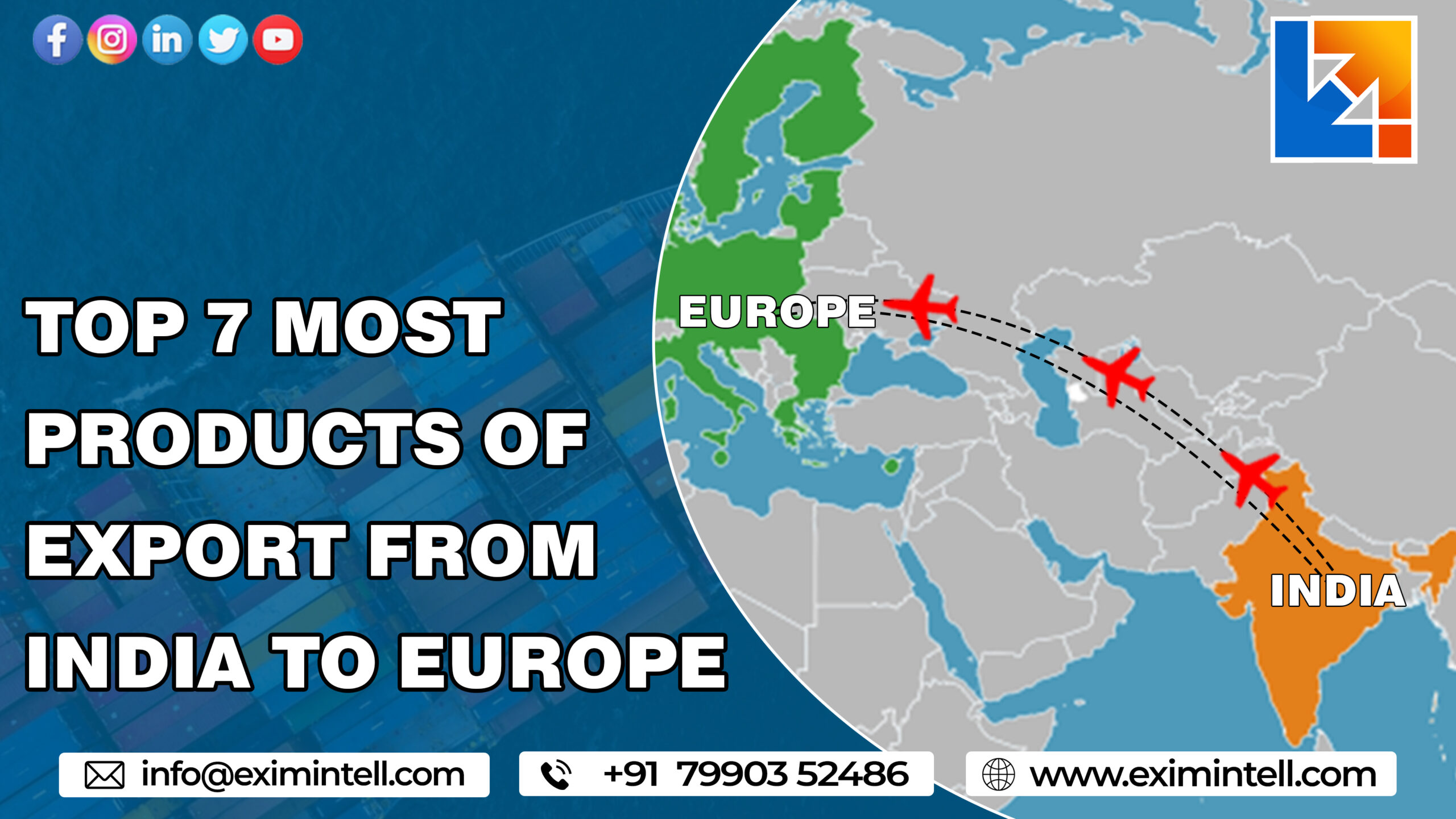“Bonjour! Have you ever wondered what India Exports to France, one of the largest economies in Europe? From aromatic spices to textile marvels and everything in between, India has always been renowned for its diverse range of export products.
Are you curious about the top 5 most lucrative Exports from India to France, splashing the International Market? Join us as we explore these fascinating trade opportunities and unravel their exciting potential for businesses looking to expand their global reach!”
Introduction to Exporting Goods from India to France
Regarding Exports, India has a lot to offer the world. From spices and textiles to tea and coffee, a variety of products are popular in France. Here is a look at some of the top exports from India to France:
Spices: India is one of the world’s largest spices producers. Common Indian spices like turmeric, cumin, and pepper are used in French cooking to add flavour and depth.
Textiles: India is also one of the world’s leading materials producers. Cotton, silk, and wool are all popular fabric choices from India. French fashion designers often use these fabrics in their garments.
Tea and coffee: Tea and coffee are two other popular exports from India to France. People of all ages in France enjoy these beverages, and are a key part of the country’s culture.
What are the Most Lucrative Exports From India To France?
India is a big market for Exports to France. The most popular items Exports from India to France include:
1. Spices: Indian spices are in great demand in France, especially cardamom, cloves, cumin, and pepper. French chefs use these spices to add flavour and depth to their dishes.
2. Tea: Tea is another popular exports from India to France. Indian tea is known for its rich flavour and health benefits.
3. Coffee: French people love their coffee, and Indian coffee is becoming increasingly popular in the country. Indian coffee beans are known for their unique flavour profile and strong aroma.
4. Rice: Rice is a staple food in many parts of the world, and India is one of the leading producers of this grain. Indian rice is exported to France, where it is used in various dishes, including curries and pilafs.
5. Lentils: Lentils are another popular Exports from India to France. These nutritious legumes are used in soups, stews, salads, and side dishes throughout the country.
Essential Steps for Legal Export from India to France
1. Essential Steps for Legal Exports from India to France:
If you are looking to exports goods from India to France, there are a few essential steps that you must take to ensure a smooth and legal process. Here are the key steps involved in exporting from India to France:

1. Obtain an Export Licence: To Export goods from India to France, you must obtain an export licence from the Indian government. This can be done by submitting an application form along with the required documents to the Directorate General of Foreign Trade (DGFT). Once your application is approved, you will be issued an export licence for goods up to a specified value.
2. Register with the Customs Authority: Once you have obtained your Export Licence, you will need to register with the customs authority in India. This can be done online through the e-Sugam portal. You must submit your registration documents and pay the applicable fees to complete this step.
3. Classify Your Goods: The next step is to classify your goods according to their Harmonized System (HS) code. The HS code is used by customs authorities worldwide to determine duties and taxes payable on imported goods. You can find the HS code for your interests online or contact a local classification society such as the Federation of Indian Export Organizations (FIEO).
4. Apply for an Export Declaration: Once you have classified your goods, you must apply for an export declaration form from the Indian customs authority. This form must be completed and submitted along with your shipping documents and associated fees to obtain customs clearance.
5. Submit Shipping Documents: The next step is to submit your shipping documents. You must provide evidence of origin certificates, commercial invoices, bills of lading and other relevant documentation to clear your shipment at French customs.
6. Pay Duties and Taxes: The final step is to pay any applicable duties and taxes on the imported goods. This can be done online through the e-Sugam portal before or after goods enter France. Once the payment has been made, you will receive a bill of entry that proves that all duties and taxes have been paid.
By following these steps, you should be able to complete an export process from India to France legally and without any issues. However, it is always recommended that you seek professional advice before beginning the process in case of any unforeseen complications or delays.
Factors Influencing Profitability of Indian Exports
There are many factors influencing the profitability of Indian exports to France. The country’s competitive advantage in terms of price, quality and delivery time is the most important factor. India has a long-established reputation as a reliable and cost-effective supplier of goods and services, which gives it a strong competitive advantage in the French market.
Other important factors include:
- The increasing demand for Indian products in France.
- The growing preference for Indian brands among French consumers.
- The favourable trade agreements between India and France.
The increasing popularity of online shopping in France is also providing a boost to Indian exports.
These factors are creating a very favourable environment for Indian exports to France, and we expect that the trend will continue in the coming years.
Trade Relationships and Agreements Between India and France
France and India have enjoyed strong trade relations for many years. In 2016, France was India’s 9th largest trading partner, with bilateral trade totalling $13.4 billion. Indian exports to France include pharmaceuticals, textiles, leather goods, gems and jewellery, and engineering products. France is a leading investor in India’s economy, with a cumulative investment of over $15 billion since 2000.
The two countries have strong economic ties and work together to promote global trade and investment. In addition, to close trade relations, the two countries have also signed several agreements to promote economic cooperation jointly. These agreements cover areas such as Double Taxation Avoidance (DTA), Bilateral Investment Promotion and Protection (BIPPA), Air Services Agreement (ASA), Economic Partnership Agreement (EPA), Technical Cooperation Agreement (TCA), etc.
Both countries are members of the World Trade Organization (WTO) and are parties to the General Agreement on Tariffs and Trade (GATT). The WTO provides a forum for member countries to negotiate and settle trade agreements. GATT is a multilateral agreement that regulates international trade in goods. India and France also comprise the World Intellectual Property Organization (WIPO).
Conclusion
India has a lot to offer France in the form of Lucrative Exports. From processed food and wood products to precious minerals and leather goods, there are plenty of items that Indian companies can sell to French buyers for great profits.
We hope this article has helped you understand what type of goods offer the most promise when Exports from India to France. With so many opportunities for growth available, it’s time for more business people and entrepreneurs in India to explore the potential of selling their wares abroad!




















